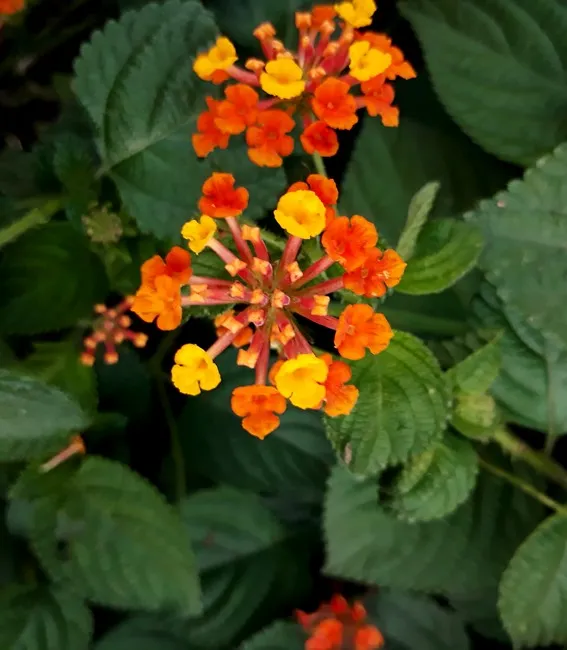
Lantana camara is considered one of the 10 worst weeds in the world because it is poisonous to livestock, can survive even in arid environments, taking over many areas completely and wages chemical warfare against other plants. Burning and cutting back tend to make Lantana plants grow back even more strongly and although it can killed with herbicide, it is expensive to spray large areas and the most effective method is to cut back the stems and paint them with herbicide, an unpleasant task with a plant that is thorny and requires gloves to handle. Scratches from the thorns often cause an allergic reaction in the skin. Biological control, in the form of plant pests that colonise these plants and reduce their numbers seems to be the only real hope for removing serious infestations of Lantana.
Sadly, there are large patches of Lantana growing all over the hill, escapees from people's gardens that were spread by birds eating the berries and then spreading the seeds around in their droppings. It is quite common for lantana to spring up under trees, a testament to the birds' work.
An unusual fact about this plant is that it is considered an entirely man-made weed. Native to South America, it was cultivated and spread all over the world the late 1800s by horticultural clubs who had no idea of the scale of nuisance they were unleashing on parts of the world such as Australia, Africa and South-East Asia, where it flourishes out of control and destroys native biodiversity
Lantana is allelopathic, meaning that it wages chemical warfare against plants. Compounds contained in the leaves inhibit germination and root development of other plants, so it actively suppresses the growth of other plants and animals can't eat it, due to its toxicity and thorns. This is why it is such an effective invader.
I am going to do some research into the availability of natural enemies of this plant because I have a large patch outside my place that I can only cut down, not eradicate, because it is growing in among the rocks, making it impossible to dig out. It's also the best possible way of controlling what is growing wild all over the hill.